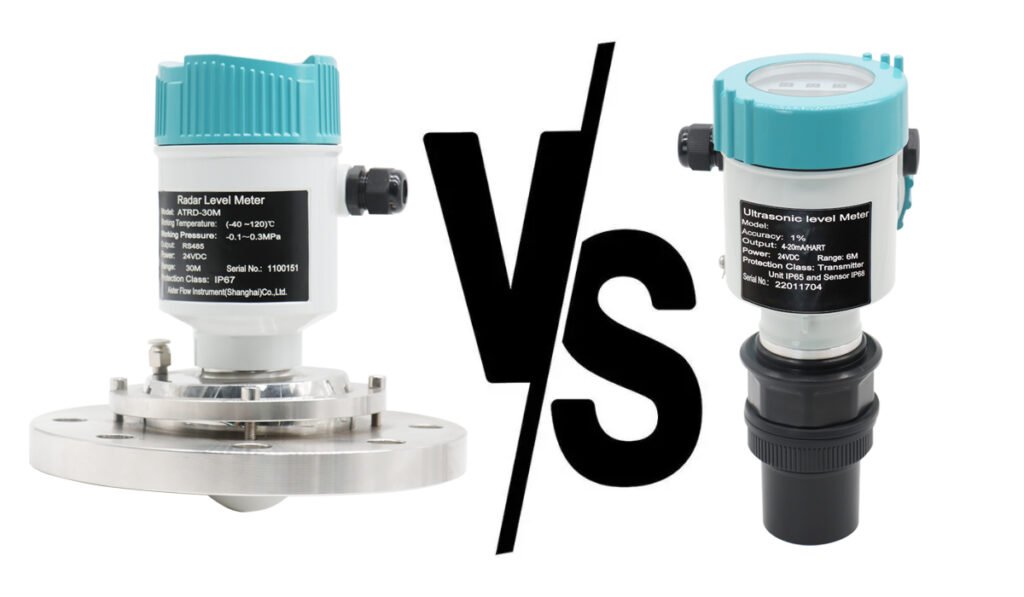There are significant differences in function, performance and application fields between radar and ultrasonic level sensors. Here’s a detailed comparison of the two:
Feature
- How it works: Radar level gauges measure liquid levels by emitting microwaves (electromagnetic waves) and receiving the signals they reflect back.
- Main features: high precision, large range (usually up to 0-100M), not affected by vacuum, can be applied to high temperature and high pressure and other complex conditions.
- How it works: Ultrasonic level gauges measure liquid levels by emitting sound waves and receiving the signals they reflect back.
- Main features: low price, small size, light weight, strong anti-interference, can be arbitrarily set the upper and lower limit nodes and online output adjustment.
Performance
Measuring medium temperature
- Radar level meter: Medium temperature range is wide, up to 1200℃.
- Ultrasonic level meter: the temperature of the medium can not exceed 80 ° C, and the sonic speed is greatly affected by temperature and pressure.
Measurement accuracy
- Radar level meter: accuracy is much higher than ultrasonic level meter.
- Ultrasonic level meter: moderate accuracy, but affected by a variety of factors, such as sonic speed affected by temperature and pressure.
Range
- Radar level meter: large range, usually up to 0-100M.
- Ultrasonic level meter: The range is relatively small, usually 0-30M or 0-60M (depending on the model and manufacturer).
Application
Radar level gauge
- Oil storage tank level measurement: such as crude oil, gasoline, diesel, etc.
- Chemical liquid storage tank level measurement: such as acid, alkali, organic solvents and other corrosive media.
- Level measurement of raw coal bunker and pulverized coal bunker: widely used in thermal power plants.
- Liquid steel level measurement: Used to measure the liquid level of molten steel during steelmaking.
- River level monitoring: It is used to monitor the change of river level in real time.
- Reservoir level measurement: Used to monitor the water level of the reservoir in real time.
- Fermenter level monitoring: Used in the process of food fermentation to monitor the level change in the fermenter.
- Liquid liquid storage tank level measurement: used to measure liquid liquid level in the pharmaceutical process.
- Reactor level monitoring: Real-time monitoring of liquid level changes in pharmaceutical reactors.
Ultrasonic level meter
- Liquid and solid material height measurement: such as various liquid storage tanks, solid material silos, etc.
- Corrosive and chemical applications: due to its excellent chemical resistance, it is suitable for the measurement of a variety of corrosive media.
- Remote level monitoring and pump control: Used in remote monitoring systems to measure liquid levels and control pump operation.
To sum up, radar level meter and ultrasonic level meter have their own advantages in function, performance and application field. In the selection, should be based on the specific measurement needs, media characteristics, working environment and other factors for comprehensive consideration.

